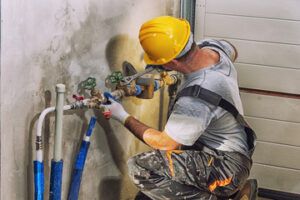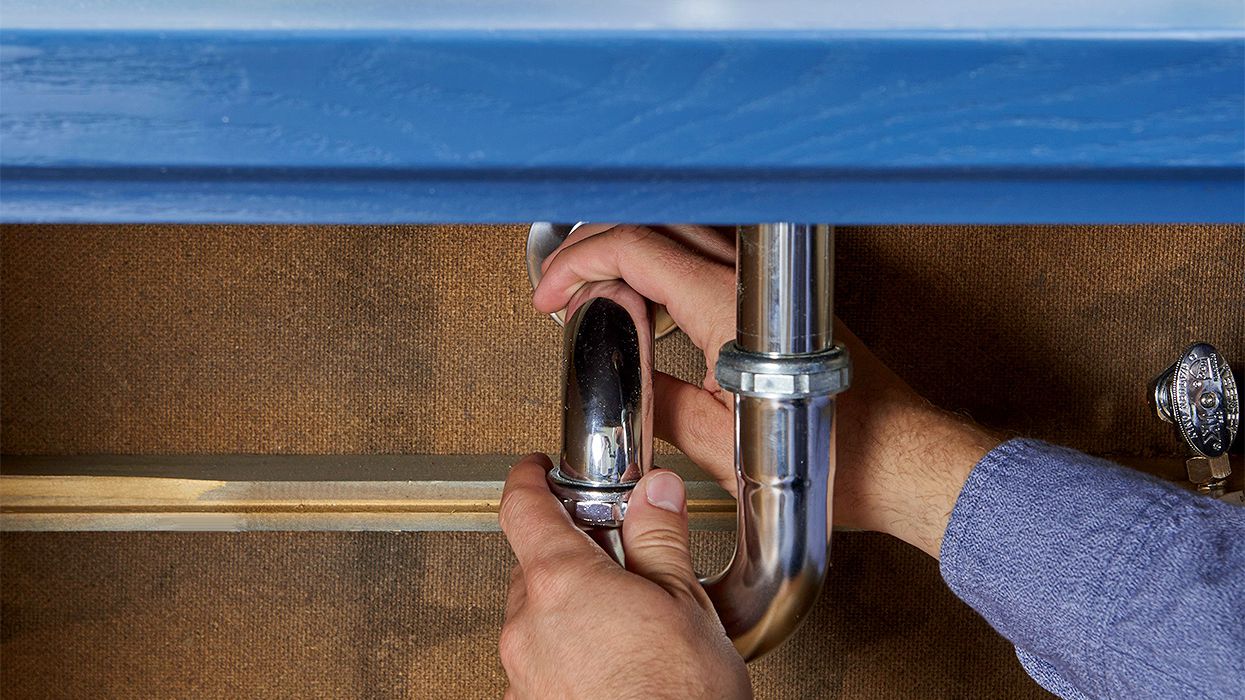Plumbing is a system of pipes that deliver potable water, remove waste, and regulate temperature in residential, commercial, and industrial settings. Unlike process piping, which moves gases, chemicals, and other materials during facility production, plumbing is designed to move only water.
If you step in a puddle or notice damp drywall, chances are you have a broken pipe that needs to be repaired. Contact Plumbing Express, Inc. for professional help.
Pipes transport water and other liquids throughout a home or business. When a pipe breaks, the liquid can leak out and damage walls, floors, ceilings and furniture. The leak also can cause mold and mildew, which are health hazards. If left untreated, a leaking pipe can lead to costly repairs.
Pipe corrosion, excess water pressure or temperature changes can lead to cracks and leaks in pipes. The pipes may be made of copper, galvanized steel or polyvinyl chloride (PVC). Depending on the material and type of pipe, different repair products are used. For example, you can use a pipe clamp to temporarily fix a leak in polyvinyl chloride or CPVC pipes, while you wait for a plumber to arrive and make a permanent repair. It’s important to turn off the water supply valve near the broken pipe before starting any work. Also, before using any pipe repair product, read the label to make sure it’s safe for your pipes.
Piping systems make modern life possible by delivering huge volumes of gas, oil and water to our homes and workplaces. They consist of pipes, flanges and fittings like elbows, tees/T-joints and valves. Pipes are the main component of piping systems, although they form only one part of it.
Pipes can be corroded or damaged by chemicals, high water pressure, temperature fluctuations and age. Leaking pipes can lead to damage to your walls, floors and ceilings, which is expensive to repair. It can also promote mold and mildew growth, which can damage your health and increase your water bill. If you suspect a leaking pipe, look for wet spots on your walls and ceilings, a musty smell in the room or high water bills.
Valves
Valves are crucial to regulating flow rates and preventing backflow within piping systems. Precision-engineered, they ensure optimal performance and safety in a wide range of industrial applications. From gate valves that perform turn-on and shut-off duties to check valves that prevent reverse flow, valves serve many essential functions.
They’re found in everything from faucets and showerheads in homes to municipal water supply systems and heating appliances. They’re also used in manufacturing, transportation and chemical processing. They work by opening, closing or partially obstructing passageways to control fluid flow. The key components of a valve include the body, bonnet and actuator.
Valves are designed to be either manual, where an operator controls the flow with a handle, or automated with actuators for remote operation. They can be made of materials like PVC, bronze and brass to suit specific application needs, and they’re available in a number of sizes and configurations.
The valve body is the first pressure boundary, resisting fluid pressure loads from connecting piping. It connects to the piping or equipment nozzle by different types of end connections, including threaded, bolted and welded joints. The body can be cast or forged in various shapes and sizes. The bonnet is the second pressure boundary, a cover that seals over the opening in the body. It’s often constructed from the same material as the valve body.
A plug valve is a type of valve that uses a rotating metal disc to allow and inhibit water flow. It operates similarly to a gate valve, but it offers more precision and can be opened and closed more quickly. This is a great choice for situations that require rapid shutoffs, such as in the event of an emergency.
Another type of plumbing valve is the water pressure-reducing valve, which lowers total residential water pressure by utilizing a diaphragm and spring. This is a valuable tool for northern Utah households that experience high water pressure, as it can help protect against potential home damage caused by excessive water force. This type of valve is a good choice for new construction as well as retrofitting existing fixtures.
Sewer Lines
The sewer line is a vital part of the plumbing system that, when damaged, can result in costly and unpleasant problems for home and business owners. Whether due to tree roots, corrosion, or general wear and tear, the condition of the sewer line can be an indication of the health and safety of the entire plumbing system.
When it comes to sewer repair, early diagnosis is the key to minimizing the cost and impact of the repairs required. This is why it’s important to have a professional inspect your home or business with techniques like sewer camera inspections. Once the problem has been identified, the plumber will be able to recommend the right solution for your situation.
Depending on the severity of the damage, the plumber may recommend either a spot repair or a full replacement of the sewer line. It is crucial that homeowners understand the difference between these options so they can make an informed decision about their preferred course of action.
Traditional sewer repair involves excavating the area above and around the damaged pipe and then removing it and replacing it with new, durable pipes. Trenchless sewer repair methods can be used in conjunction with traditional pipe repairs to minimize the impact on the surrounding property.
There are several different options for replacing a sewer line, including cured-in-place pipe lining and slip lining. The type of sewer line that is best for your property depends on a number of factors, including the current size and location of the pipe, its material, and the accessibility to the pipe.
Sewer line repiping is a complex and expensive process that requires the services of licensed professionals. Not only do they have the experience and tools to complete the job safely and effectively, but they are also well-versed in the regulatory landscape of permits and compliance, guaranteeing that your sewer line repiping adheres to all environmental standards.
Drain Cleaning
Over time, soap scum, hair, grease, food particles, and other debris can accumulate in your drain pipes, leading to slow drainage or even complete blockage. Regular drain cleaning keeps these substances from building up, maintaining efficient plumbing and reducing foul odors that can pollute your home.
In many cases, clogs can be cleared using tools such as a plunger or a drain snake. Chemicals like commercial drain cleaners can also be effective if used properly. But for more serious issues, a professional plumber may need to use mechanical methods such as drain snaking or hydro jetting. These powerful techniques blast high-pressure water through your pipes, dislodging and flushing away debris and making it harder for clogs to return.
If you suspect a clogged drain, listen for gurgling sounds as water attempts to move through the pipe or watch for standing water around the drain opening. If these signs are present, it’s important to call a plumber right away to prevent the problem from worsening.
There are several things you can do to help prevent clogged drains, including installing strainers or a wire mesh over the drain opening to catch hair and other debris. Additionally, you can periodically flush the drains with hot water. Finally, you can use a wet/dry vacuum to suck up debris and dirt that has collected in the drain line.
Performing regular drain maintenance is one of the best ways to avoid costly repairs and keep your drains functioning properly. By taking these simple steps on a weekly or monthly basis, you can keep your drains clean and free of obstructions that could lead to slow drainage and foul odors.
One of the most popular and environmentally friendly DIY drain cleaners is a combination of baking soda and vinegar. Simply pour a cup of baking soda followed by a cup of vinegar down the drain. This causes a chemical reaction that breaks down and removes minor clogs. If this is ineffective, you can try mixing a solution of hot water and dish soap to loosen clogs, or you can use a drain snake to physically break up and remove large clogs.

